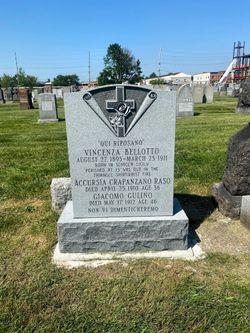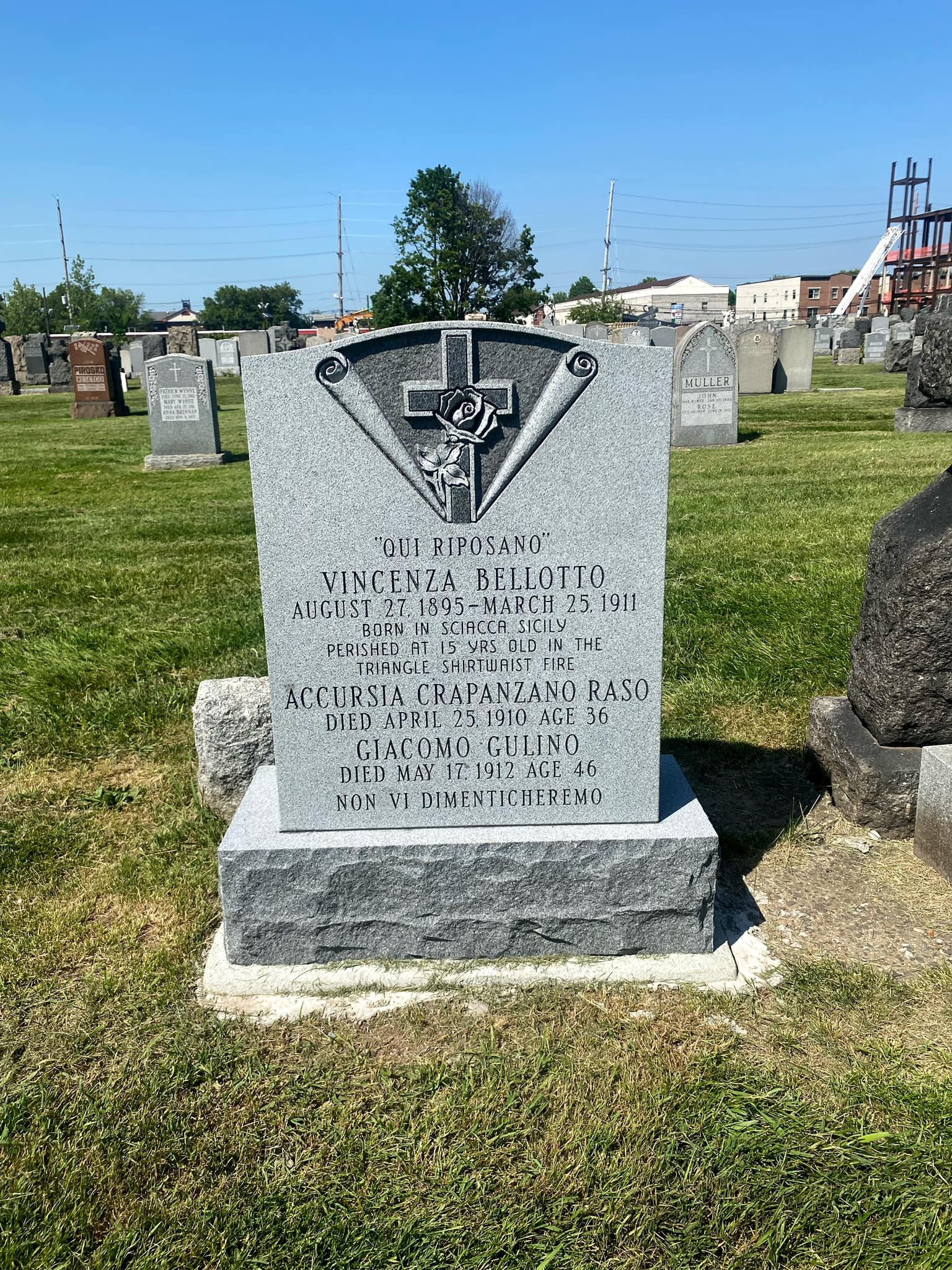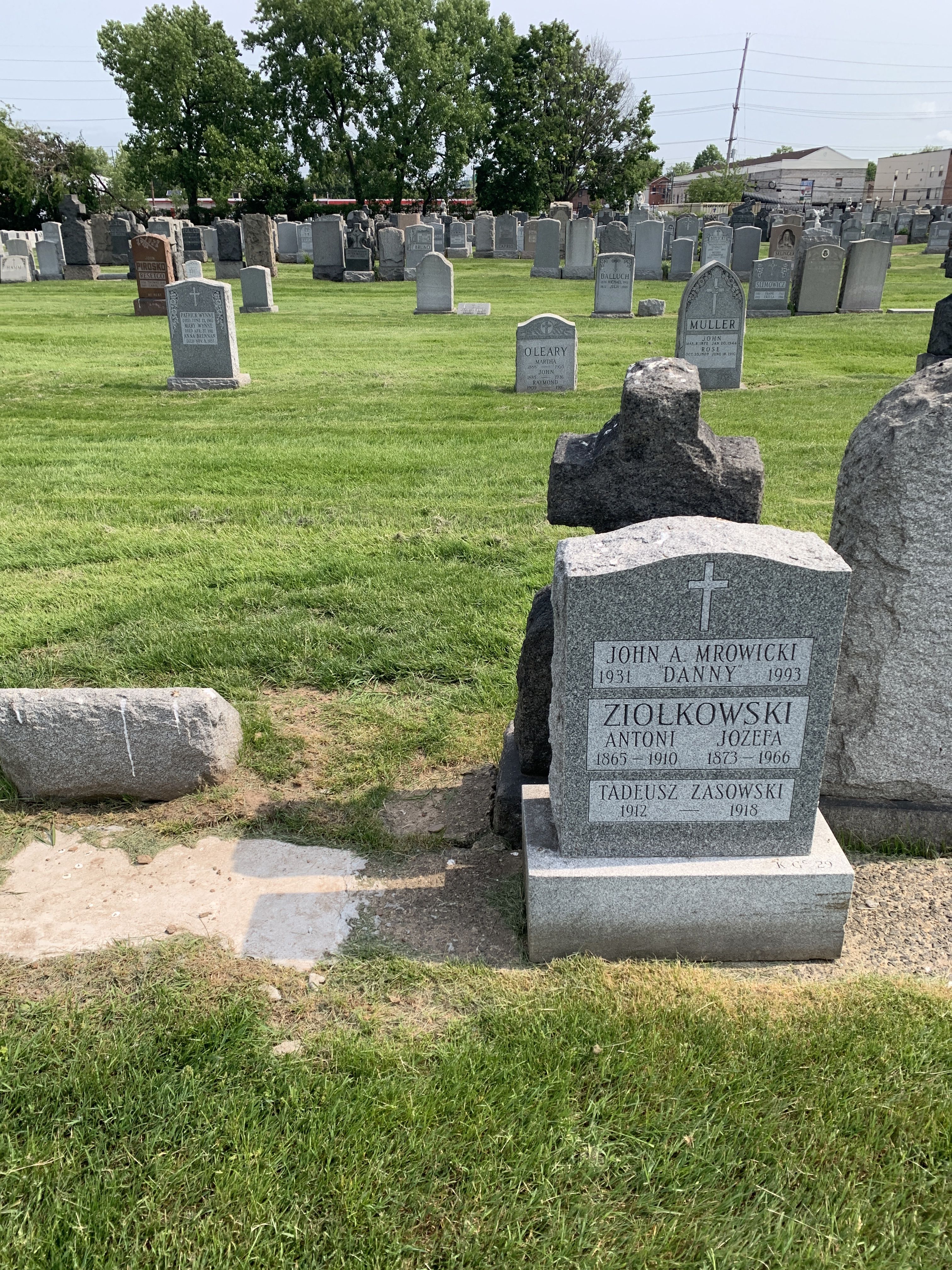The company made women's blouses, known as "waists" or "shirtwaists", and it's workers were mostly recent immigrant German, Italian and European Jewish girls, some as young as 13 years old, although older women and men and young boys were also represented. Their working conditions were far from safe. They worked 14 hour shifts among heaps of flammable bolts of fabric, scraps of which piled up in bins, baskets and on the floor around them; tissue paper patterns hung from racks above their worktables. The workrooms were lit by open flame gas lamps and the cutters, mostly men, were allowed to smoke as they worked. Brought on by a New York garment workers strike in 1910, many had joined the fledgling International Ladies' Garment Workers' Union. At the conclusion of the strike, most companies had signed agreements with the union improving working conditions. The Triangle Company, however, refused to sign and was under no obligation to abide by established safety rules.
On March 25, 1911, around 4:30pm, fire broke out on the 8th floor. Most on that floor and the executives on the 10th floor were able to escape, but workers on the 9th floor, who had not been alerted to the fire, found themselves trapped. Of the four 9th floor exits, the elevator was commandeered by 8th floor workers and then stopped working altogether, one stairwell door was soon blocked by fire and smoke, the other stairwell door had been locked (although denied by the owners in the trial held after, it was a common practice to lock factory workers in to prevent them from stealing) and the only fire escape proved too flimsy and collapsed under the weight of the escaping workers. Many died from being overcome by the smoke and flames quickly filling the building, but 62 of the workers realized there were no other means of escape and jumped from the windows to the pavement 9 stories below. Or worse, they were pushed toward the open windows by the panicked crowd and had no choice. Although the fire department responded quickly, the water from their hoses would not reach the top floors and ladders of the time were unable to reach above the 6th floor. By the time the fire was extinguished, 141 people had lost their lives. In the next few days, 5 more would die from their injuries.
From her documented injuries and cause of death, Vincenza was overcome by the smoke and flames and never escaped the burning building. Her body was identified on March 27 by her uncle, Ignatzio Razio, according to the New York Times, "through the heel of her shoe. He had taken her shoe to be repaired and the shoemaker put in a plate whose peculiar construction he recognized." She appears as Case #103 in the April 1912 Final Report of the Red Cross Emergency Relief Committee: "A girl of 17 was killed. She lived with an uncle in Hoboken. She did not send money to her mother and little brother and sister in Sicily, but all reports agreed that she had savings amounting to $150.00 on her person which she was intending to send to them in one sum. $100.00 was sent to the mother at once through the Italian Consul-General, and on receiving confirmation of the facts from the municipal authorities of the town in Sicily $400.00 more was sent through the same channel. The uncle in Hoboken was reimbursed for the expenses he had had in connection with the funeral. He expressed pleasure and satisfaction at the action taken in behalf of his sister."
The public outrage and subsequent acquittal of the company's owners following the tragedy paved the way for a flood of legislation to improve factory safety standards, led to the founding of The American Society of Safety Engineers and hastened the growth and clout of the International Ladies' Garment Workers' Union. A bystander who witnessed the young girls jumping from the windows was inspired to a life of public service fighting for the rights of factory workers; Frances Perkins went on to become the first woman appointed to a Presidential Cabinet position as Franklin Roosevelt's Secretary of Labor. The Triangle Shirtwaist Fire was the single worst workplace disaster in New York City until the attack on the World Trade Center in 2001.∼Died in the Triangle Shirtwaist Factory Fire. Father identified her by the heel of her shoe.
The company made women's blouses, known as "waists" or "shirtwaists", and it's workers were mostly recent immigrant German, Italian and European Jewish girls, some as young as 13 years old, although older women and men and young boys were also represented. Their working conditions were far from safe. They worked 14 hour shifts among heaps of flammable bolts of fabric, scraps of which piled up in bins, baskets and on the floor around them; tissue paper patterns hung from racks above their worktables. The workrooms were lit by open flame gas lamps and the cutters, mostly men, were allowed to smoke as they worked. Brought on by a New York garment workers strike in 1910, many had joined the fledgling International Ladies' Garment Workers' Union. At the conclusion of the strike, most companies had signed agreements with the union improving working conditions. The Triangle Company, however, refused to sign and was under no obligation to abide by established safety rules.
On March 25, 1911, around 4:30pm, fire broke out on the 8th floor. Most on that floor and the executives on the 10th floor were able to escape, but workers on the 9th floor, who had not been alerted to the fire, found themselves trapped. Of the four 9th floor exits, the elevator was commandeered by 8th floor workers and then stopped working altogether, one stairwell door was soon blocked by fire and smoke, the other stairwell door had been locked (although denied by the owners in the trial held after, it was a common practice to lock factory workers in to prevent them from stealing) and the only fire escape proved too flimsy and collapsed under the weight of the escaping workers. Many died from being overcome by the smoke and flames quickly filling the building, but 62 of the workers realized there were no other means of escape and jumped from the windows to the pavement 9 stories below. Or worse, they were pushed toward the open windows by the panicked crowd and had no choice. Although the fire department responded quickly, the water from their hoses would not reach the top floors and ladders of the time were unable to reach above the 6th floor. By the time the fire was extinguished, 141 people had lost their lives. In the next few days, 5 more would die from their injuries.
From her documented injuries and cause of death, Vincenza was overcome by the smoke and flames and never escaped the burning building. Her body was identified on March 27 by her uncle, Ignatzio Razio, according to the New York Times, "through the heel of her shoe. He had taken her shoe to be repaired and the shoemaker put in a plate whose peculiar construction he recognized." She appears as Case #103 in the April 1912 Final Report of the Red Cross Emergency Relief Committee: "A girl of 17 was killed. She lived with an uncle in Hoboken. She did not send money to her mother and little brother and sister in Sicily, but all reports agreed that she had savings amounting to $150.00 on her person which she was intending to send to them in one sum. $100.00 was sent to the mother at once through the Italian Consul-General, and on receiving confirmation of the facts from the municipal authorities of the town in Sicily $400.00 more was sent through the same channel. The uncle in Hoboken was reimbursed for the expenses he had had in connection with the funeral. He expressed pleasure and satisfaction at the action taken in behalf of his sister."
The public outrage and subsequent acquittal of the company's owners following the tragedy paved the way for a flood of legislation to improve factory safety standards, led to the founding of The American Society of Safety Engineers and hastened the growth and clout of the International Ladies' Garment Workers' Union. A bystander who witnessed the young girls jumping from the windows was inspired to a life of public service fighting for the rights of factory workers; Frances Perkins went on to become the first woman appointed to a Presidential Cabinet position as Franklin Roosevelt's Secretary of Labor. The Triangle Shirtwaist Fire was the single worst workplace disaster in New York City until the attack on the World Trade Center in 2001.∼Died in the Triangle Shirtwaist Factory Fire. Father identified her by the heel of her shoe.
Inscription
"QUI RIPASANO"
VINCENZA BELLOTTO
AUGUST 27, 1895 - MARCH 25, 1911
BORN IN SCIACCA SICILY
PERISHED AT 15 YRS OLD IN THE
TRIANGLE SHIRTWAIST FIRE
ACCURSIA CRAPANZANO RASO
APRIL 25, 1910 AGE 36
GIACOMO GULINO
DIED MAY 17, 1912 AGE 46
NON VI DIMENTICHEREMO
Sponsored by Ancestry
Advertisement
Records on Ancestry
Sponsored by Ancestry
Advertisement



